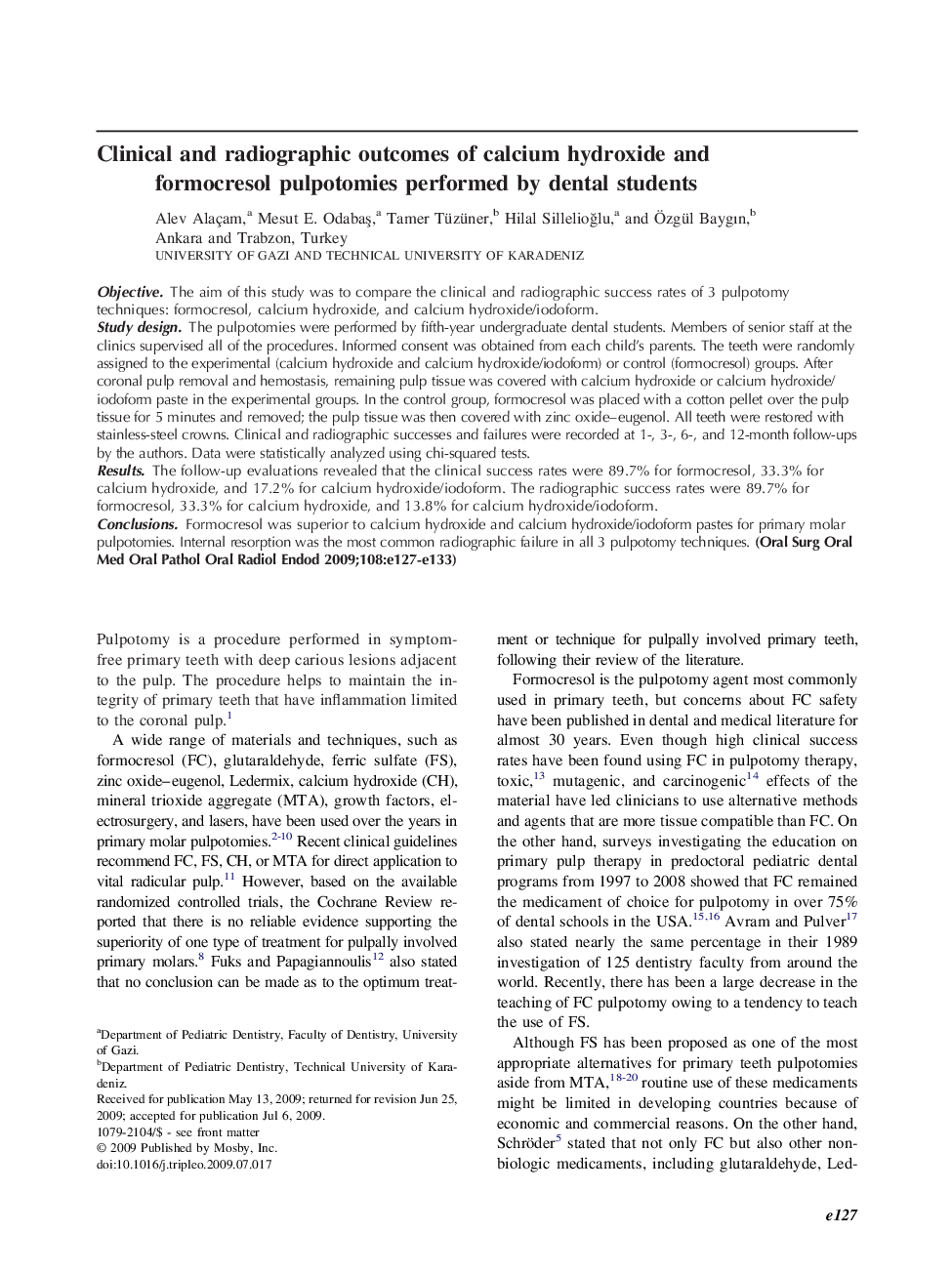| Article ID | Journal | Published Year | Pages | File Type |
|---|---|---|---|---|
| 3168110 | Oral Surgery, Oral Medicine, Oral Pathology, Oral Radiology, and Endodontology | 2009 | 7 Pages |
ObjectiveThe aim of this study was to compare the clinical and radiographic success rates of 3 pulpotomy techniques: formocresol, calcium hydroxide, and calcium hydroxide/iodoform.Study designThe pulpotomies were performed by fifth-year undergraduate dental students. Members of senior staff at the clinics supervised all of the procedures. Informed consent was obtained from each child's parents. The teeth were randomly assigned to the experimental (calcium hydroxide and calcium hydroxide/iodoform) or control (formocresol) groups. After coronal pulp removal and hemostasis, remaining pulp tissue was covered with calcium hydroxide or calcium hydroxide/iodoform paste in the experimental groups. In the control group, formocresol was placed with a cotton pellet over the pulp tissue for 5 minutes and removed; the pulp tissue was then covered with zinc oxide–eugenol. All teeth were restored with stainless-steel crowns. Clinical and radiographic successes and failures were recorded at 1-, 3-, 6-, and 12-month follow-ups by the authors. Data were statistically analyzed using chi-squared tests.ResultsThe follow-up evaluations revealed that the clinical success rates were 89.7% for formocresol, 33.3% for calcium hydroxide, and 17.2% for calcium hydroxide/iodoform. The radiographic success rates were 89.7% for formocresol, 33.3% for calcium hydroxide, and 13.8% for calcium hydroxide/iodoform.ConclusionsFormocresol was superior to calcium hydroxide and calcium hydroxide/iodoform pastes for primary molar pulpotomies. Internal resorption was the most common radiographic failure in all 3 pulpotomy techniques.
